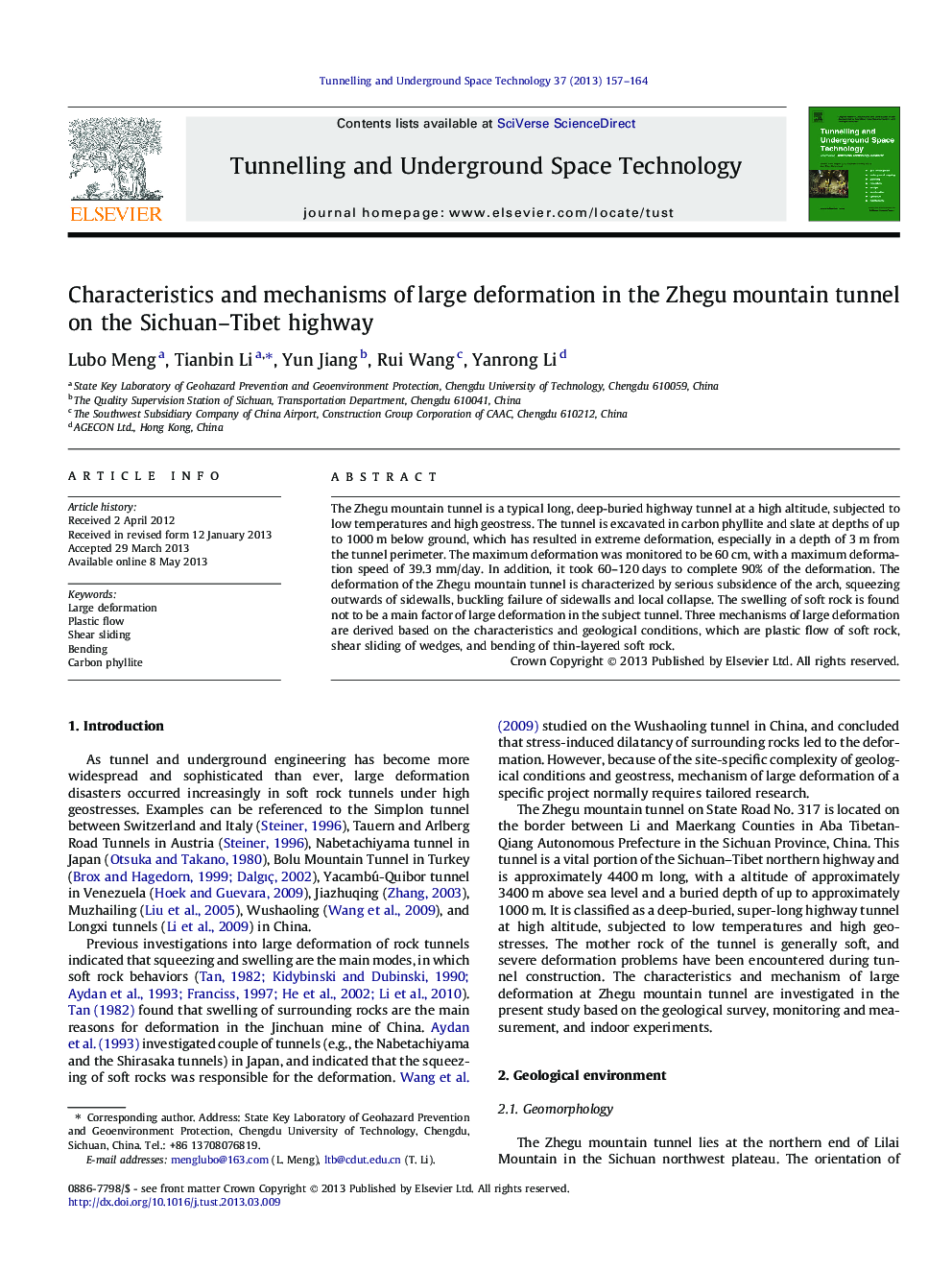| Article ID | Journal | Published Year | Pages | File Type |
|---|---|---|---|---|
| 311888 | Tunnelling and Underground Space Technology | 2013 | 8 Pages |
•The major principal stress can be divided into a stress relaxation zone, an increased stress zone and a balanced stress zone.•The large deformation characteristics of the Zhegu mountain tunnel were studied.•The geostress, rock strength, rock mass structure and groundwater are main factors of the large deformation.•The large deformation mechanisms of the Zhegu mountain tunnel are categorized into three modes.
The Zhegu mountain tunnel is a typical long, deep-buried highway tunnel at a high altitude, subjected to low temperatures and high geostress. The tunnel is excavated in carbon phyllite and slate at depths of up to 1000 m below ground, which has resulted in extreme deformation, especially in a depth of 3 m from the tunnel perimeter. The maximum deformation was monitored to be 60 cm, with a maximum deformation speed of 39.3 mm/day. In addition, it took 60–120 days to complete 90% of the deformation. The deformation of the Zhegu mountain tunnel is characterized by serious subsidence of the arch, squeezing outwards of sidewalls, buckling failure of sidewalls and local collapse. The swelling of soft rock is found not to be a main factor of large deformation in the subject tunnel. Three mechanisms of large deformation are derived based on the characteristics and geological conditions, which are plastic flow of soft rock, shear sliding of wedges, and bending of thin-layered soft rock.
